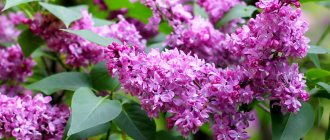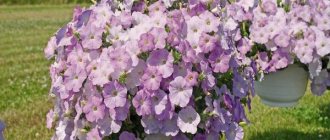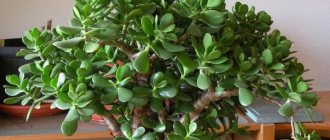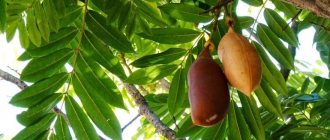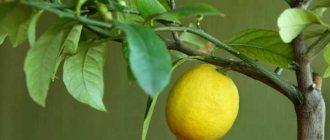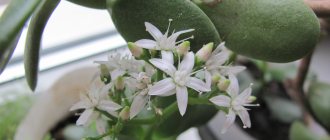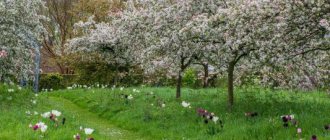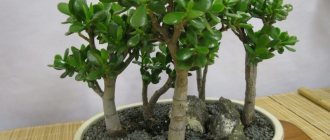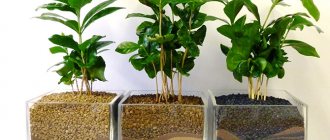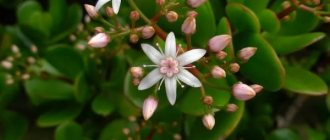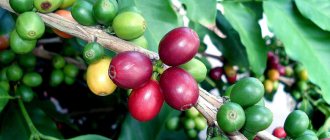Chestnut tree
Chestnut is a member of the Legume family. Reaches a height of 30 meters. The characteristics clearly indicate greatness and superiority over other types of trees growing in its territorial area.
Description of chestnut tree:
- trunk more than 2 meters wide.
- The leaves are wide, oblong-lanceolate with pointed ends. The length is about 15-25 cm.
- The flowers are large, white, and upward-sloping flowers look like luxurious earrings created by nature. Each flower is divided into 6 petals and 6-15 stamens.
- The nut is interesting in appearance and content. Covered on the outside with a thick, prickly crust, it looks like a hedgehog. The fruit itself consists of cellulose, starch and sugar. It is brown in color and divided into two or three parts inside the peel.
Chestnut is a long-living plant. The age of the tree can exceed 1 thousand years.
And in the vicinity of the Sicilian volcano Etna, the legendary Chestnut of hundreds of horses was found. It blooms unusually beautifully and is the hero of an ancient Italian legend. It is worth noting that the specimen survived about 4 thousand years.
This video shows how chestnut blossoms in stages:
Distribution history
The spread and acclimatization of the chestnut tree goes back a long way. From the very beginning it was known during the era of the great Greek Empire.
Chestnut was valued for its qualities:
- nutritious fruits;
- the use of tree trunks as material for the production of ships and furniture;
- use of nut-based medicines;
- aesthetic aspect when the tree blooms.
The Greeks developed breeds to achieve specific purposes: for making Spartan black bread, flour or soups.
In the eighth century, the chestnut again began to enjoy popularity among members of high society, becoming a main ingredient in the production of sweets.
Where does chestnut grow?
The distribution area of the chestnut tree is wide:
- Spain;
- France;
- Part of Switzerland (Valais, Southern District);
- Italy, including Alpine valleys;
- Croatia;
- Balkan Peninsula;
- Asia Minor;
- Caucasus;
- Persia;
- South Africa.
Many species have spread as far as Japan and the United States of America. This is a typical forest tree, especially common on the Italian mountain slopes and also known in the Mediterranean Sea, with plantings reaching the Black Sea.
For fruitful growth you need:
- The soil . The chestnut tree does not live in isolation from other species. Loves siliceous soil or limestone. Chestnut blooms fruitfully in fresh soil, although it does not seek excess moisture. It is not planted in garden areas, as its size will become a serious problem for the development of other plants and species. The chestnut tree does not require special conditions for growth. Grows even in poor soil. The main thing is that it is a neutral layer of earth, with slight acidity, and does not contain clay.
- Temperate climate . Trees do not like constantly wet and compact soil, and also do not tolerate prolonged drought, especially in summer. In areas with high temperatures and dry climates, trees find their place in mountainous areas or among the hills, where the summer heat does not exceed dangerous levels.
- No low temperatures. Can withstand temperatures of -20 degrees in winter. But if this situation drags on for several weeks, the tree dies.
- High temperatures. It also tolerates heat normally if it does not exceed a short period. In this case, it is recommended to plant trees in a more ventilated area and with shade during the hottest time of the day. The chestnut tree is not afraid of drought, which does not last long and does not affect the period when the chestnut tree blooms.
Wintering horse chestnut pavia
Despite its shallow root system, pavia horse chestnut is quite frost-resistant and, with light shelter, can withstand even the most snowless and severe winters. Moreover, pavia recovers well after freezing. In the conditions of the northern zone, it is recommended to annually carry out additional pre-winter mulching of the soil with a layer of dry leaves. For young plants, it is better to carry out hilling. The older the tree becomes, the higher its frost resistance.
Red horse chestnut is prone to frost damage, especially when young. In February, it is better to wrap the plant trunks in several layers of burlap, and during the winter carefully inspect the plants themselves for signs of bark injuries and immediately take action if tears appear. All standard pavias are also protected with burlap for the winter.
When does chestnut bloom?
The peculiarity of flowering is that it begins quite late compared to other fruit trees.
The swelling of the buds and the opening of flowers usually occurs in May.
This advantage avoids the risk of frost during bud opening and, as a result, loss of nuts.
And also a lot depends on the breed. Certain categories of chestnut fruit trees adapt to the required temperatures and begin to bloom when the climate becomes suitable for them.
Flowering lasts about 2-3 weeks, after which small green nuts are formed.
How does chestnut bloom?
An impressive moment in the life of this tree is the moment of flowering. With the arrival of spring, the tree comes to life after winter sleep. It transforms in such a way that it is impossible to take your eyes off its beauty and charm.
Description of chestnut flower:
- Flowers come in different shades depending on the specific type of wood.
- Often these are large white blooms with red or pink specks.
- The shape of the flowers resembles medieval candles.
- The structure is unusual and complex.
- Along the crown there are many individual flowers that form a pyramid.
- They reach almost 2 cm in diameter, surpassing any tree in size and beauty of flowering.
Photo gallery: flowering chestnut tree
Why doesn't it bloom?
Chestnut does not require constant care and is easy to grow. What factors influence the development of a chestnut tree and why does it not bloom?
Here are the main reasons:
- Age . Some species of this tree do not begin to flower until they reach ten years of age. There are also breeds that need longer time.
- Lack of space . The chestnut tree is a large specimen. It is important to have the space necessary for growth. When there is not enough space, the tree stops developing and stops blooming. It is important to ensure that there are no other trees within a radius of at least six meters from the trunk. When the chestnuts are close, it will be cramped for one. In this case, a strong tree will take away moisture and soil, and the other will die from lack of opportunity to grow.
- Unsuitable air temperature . A tree with inedible nuts always blooms, since it does not need a certain temperature. It is enough that it is not too high or too low. The situation is different with edible breeds. Often, they require 13 – 18 degrees above zero to bloom. In cold climates, chestnuts do not bloom.
Reproduction of horse chestnut pavia
In terms of its reproduction capabilities, red horse chestnut is not much different from horse chestnuts in general. The optimal method for wood growing is to obtain new plants from seeds.
Chestnut fruits require preliminary stratification. To do this, the collected freshly fallen seeds need to be soaked in warm water for several days, changing it regularly to maintain the temperature. After soaking, the chestnuts are buried in wet sand and sent for stratification at a temperature of about 3-5 degrees Celsius. Stratification should last about 3-4 months. Sowing for germination is carried out in open soil, on a seedling bed, only after the threat of repeated frosts has passed.
Traditionally, pavia horse chestnuts are sown in May. For the plant you need to prepare high-quality nutritious soil. The fruits are buried 10 cm at a sufficient distance to grow for 2 years. Before moving to a permanent place, two-year-old seedlings are carefully dug up, the soil is partially removed and the tap root is shortened by a third of its length for active branching of the rhizome and a lush spreading crown.
Red horse chestnut, or pavia horse chestnut (Aesculus pavia). © Mark Dwyer
Types of flowering chestnuts
Over the centuries, growing trends have changed and different types of wood are found. They vary in distribution area and in fruit quality, tree structure, longevity and use.
Chestnut
Popular view. Blooms in areas of constant rain and high humidity. The fruits are suitable for consumption with a pleasant sweetish taste. The main ingredient in the production of sweets and jams.
Chestnut
Fruits of chestnut
Horse chestnut
The horse chestnut, or common chestnut , is a centuries-old tree with roots in Western Asia and Eastern Europe. Popular all over the world. The horse species is used as an ornamental plant for parks and alleys. Nuts are not edible. The name suggests that horse chestnut was used mainly as food for horses.
Description of the species:
- Horse chestnut is similar to sweet chestnut in terms of tree structure, but their fruits are very different from each other.
- The horse variety is larger in size and the skin is much coarser than the sweet variety.
- The needles are wide and less frequent.
- Horse chestnut fruits contain a high percentage of saponins and glucosides, which are unpleasant to the taste.
horse chestnut
Horse chestnut fruit
Australian chestnut
This species does not take its name from its country of origin. The Australian species was brought to the mainland by emigrants. In particular, from Great Britain, Ireland and China, who arrived in Australia for the purpose of gold mining between 1850 and 1870.
The Australian chestnut differs from other breeds in its ideal shape. It amazes with its bright emerald hue and smooth leaves. Gets along great even at home. In favorable conditions, the height reaches 10 meters. The fruits have a sweetish, rich taste and are suitable for making jam.
Australian chestnut
Australian chestnut fruits
Japanese chestnut
Distributed on the mountain slopes of Japan. The tree blooms very early - already in the second year after planting. Selects clay soil and humid climate. The height of an adult specimen is about 15-20 meters. The branches fall to the ground and bear large edible fruits.
Japanese chestnut
Japanese chestnut fruit
Chinese chestnut
The species blooms mainly in China, Vietnam and Korea, creating entire chestnut forests. Chinese chestnut chooses soils rich in calcium. The flowering period begins quite late - in the fifth year after planting.
Flowers of the Chinese species are unlike any inflorescence of other species . These are the thinnest long flowers, shaped like the top of a reed. The fruits of Chinese chestnut are used in the food industry and construction activities.
Chinese chestnut
Chinese chestnut fruit
Red chestnut
A tree of the horse chestnut family, a rare species. It is fragile and grows in parks. Due to its bright pink flowers and pleasant scent, red chestnut is often used for decoration purposes. It begins to bloom in early spring and ends flowering at the end of the season.
Red chestnut
Guinea chestnut
Originates in the tropical forests of Central America. The biggest maintenance challenge is the large amount of water the tree requires to grow. The Guinea chestnut is a bright representative of the Baobab family. The shape resembles a bottle, since in the lower part the chestnut tends to accumulate moisture to saturate the trunk of the fruit.
In Russia, Guinea chestnut is used as part of home interiors . It adapts well to room temperature and does not exceed small sizes if the space is limited by a vase. Flowering Guinea chestnut at home is almost impossible.
Smooth chestnut
Another representative of the horse chestnut family, therefore the fruits of the subspecies are inedible. Smooth chestnut blooms mainly in areas of North America, Central Asia and Europe. Frost-resistant and light-loving breed.
forest chestnut
The tree originated in Turkey, after which it spread throughout Europe. Forest chestnut is popular in the United States, where it is part of the crops that decorate national parks and gardens with beautiful flowers. The tree cannot bear edible fruit. Therefore, it is used only for decorative purposes.
Decorative forms and varieties of pavia horse chestnut
The basic horse chestnut plant, pavia, today is significantly inferior in popularity to decorative forms. And this is not surprising: the natural North American species is less winter-hardy than the common horse chestnut, and its considerable height limits its use. But selectively bred hybrid forms show off more interesting growth forms, compact sizes, and more saturated color tones.
Red horse chestnut, or half-cut pavia horse chestnut (Aesculus pavia sublaciniata). © Mark Dwyer
The best decorative forms of pavia horse chestnut include:
- semi-cut (sublaciniata) - a shrub with a spreading crown, very beautiful narrow leaf lobes with deep, original teeth, which will surprise you with its rich dark red color during flowering, surprisingly gracefully contrasting with the cool shade of the leaves;
- dark red form (atrosanguinea) with a wine-scarlet color;
- a low-growing form (humilis) with uniquely outstretched shoots, forming a beautiful low bush with a reduced size of inflorescences with a light red color.
Certain varieties of pavia horse chestnut also deserve attention. For example, the variety 'Koehnei' with loose, seemingly prickly inflorescences, an elongated tube at the flowers and a play of outer orange color and bright pink-red inside the corolla of the flower.
Today, red horse chestnut is often used for tree trunks. Its rounded crown, thanks to its cutting and shaping, seems especially elegant, and its thin trunk only emphasizes its openwork beauty.
Horse chestnut pavia, variety 'Koehnei'. © gartenknorze
Often on the Russian-language Internet this variety can be found under the name Koebnei, which is not correct.
How to distinguish an edible chestnut from an inedible one?
It is important to be able to distinguish edible from inedible fruits. One of the differences is the appearance of the fruit.
Inedible chestnut:
| |
Edible chestnut:
|
Pest and disease control
One of the disadvantages of all horse chestnuts is rightfully considered to be vulnerability to apple leaf miner and chestnut moth. At the same time, prevention does not always bear fruit, and the fight sometimes comes down to the complete collection and destruction of fallen leaves. When adjacent to infected plants, pavia may suffer from powdery mildew and wood mites.
Red horse chestnut, or pavia horse chestnut. © Paco Garin
Uses of chestnut
Chestnut has found wide application in human life due to its rare properties.
Here are the main areas of application:
- Construction and furniture making . In industry, wild chestnut is a source of wood. Compact and stable, used in the manufacture of railway sleepers and furniture.
- Food industry . Cultivated chestnut is used in the food industry. Serves as an ingredient in the preparation of sweets, flour, buns, etc. Chestnut fruits are a low-calorie product, so they are in great demand on store shelves. Used in any form: dried, fried and boiled.
- Coal industry . Chestnut is also good for making coal. A high-quality source of heat and produces ash, an excellent assistant in fertilizing garden crops.
Interesting facts about chestnut
- Having a centuries-long history of distribution behind it, the chestnut is the hero of legends. The most famous of them was in relation to the Hundred Horse Chestnut, which grows in Sicily in the vicinity of Mount Etna. The specimen is considered the oldest tree in Europe. The age has reached almost 4 thousand years.
- The name comes from a legend that says that Giovanna of Aragon and her army, 100 horses and riders were once hiding from a thunderstorm under the massive branches of a tree.
- The Hundred Horse Chestnut is listed in the Guinness Book of World Records and is the main character in many songs and stories of famous cultural figures of the seventh and eighth centuries.
- Another interesting fact is the use of tree leaves as tobacco. Initially, they were dried and underwent the necessary processing.
Chestnut is a great gift from nature to humanity. Therefore, if you pass by it, be sure to stop and watch it bloom.
